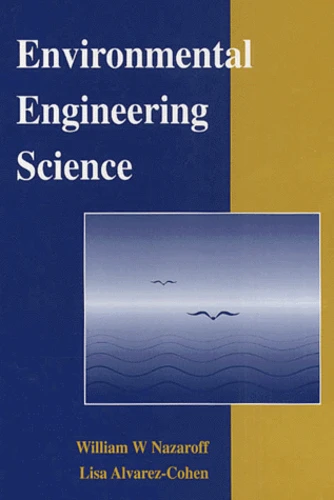Environmental Engineering Science
Par : ,Formats :
- Paiement en ligne :
- Livraison à domicile ou en point Mondial Relay indisponible
- Retrait Click and Collect en magasin gratuit
- Réservation en ligne avec paiement en magasin :
- Indisponible pour réserver et payer en magasin
- Nombre de pages690
- PrésentationRelié
- Poids1.285 kg
- Dimensions18,5 cm × 26,0 cm × 3,0 cm
- ISBN0-471-14494-0
- EAN9780471144946
- Date de parution06/12/2000
- ÉditeurWiley
Résumé
Connecting fundamental principles to practical applications, William Nazaroff and Lisa Alvarez-Cohen's ENVIRONMENTAL ENGINEERING SCIENCE provides a thorough and balanced introduction to water quality engineering, air quality engineering, and hazardous waste management. The text develops the scientific principles needed to understand environmental engineering, and then brings those principles to life through applications to the real-world solutions of environmental problems.
Throughout, ENVIRONMENTAL ENGINEERING SCIENCE provides numerous opportunities to put fundamental principles into practice. Many worked examples offer clear explanations of complex environmental subjects. Fascinating quantitative problems enable you to apply what you've learned and develop strong problem-solving skills. A basic set of tools will help you solve problems in any area of
environmental engineering practice. By following this approach, readers will develop solid theoretical and practical knowledge of the field that will benefit them throughout their careers.
Connecting fundamental principles to practical applications, William Nazaroff and Lisa Alvarez-Cohen's ENVIRONMENTAL ENGINEERING SCIENCE provides a thorough and balanced introduction to water quality engineering, air quality engineering, and hazardous waste management. The text develops the scientific principles needed to understand environmental engineering, and then brings those principles to life through applications to the real-world solutions of environmental problems.
Throughout, ENVIRONMENTAL ENGINEERING SCIENCE provides numerous opportunities to put fundamental principles into practice. Many worked examples offer clear explanations of complex environmental subjects. Fascinating quantitative problems enable you to apply what you've learned and develop strong problem-solving skills. A basic set of tools will help you solve problems in any area of
environmental engineering practice. By following this approach, readers will develop solid theoretical and practical knowledge of the field that will benefit them throughout their careers.

